Finding the silver linings in retreat

We woke up to six inches of snow on the tent. A quick glance outside raised concerns. It was overcast and still snowing.
Usually, new snow would create excitement on a backcountry ski adventure. But we were hoping to climb and ski a very technical 13,000-foot peak called Jagged Mountain, and these conditions were not ideal.
The approach to our camp took two full days, and we weren’t going to let that effort be lost to the unexpected weather, at least not without a closer look. So we got organized and headed toward the mountain, maintaining some optimism. Maybe the skies would clear. Perhaps there wasn’t too much new snow to interfere with our plan.
But it was quickly apparent that the conditions were too risky. In the interest of safety and a low likelihood of success, we opted to turn back. Jagged would have to wait for another day.
The decision was a tough pill to swallow. Extensive planning went into this outing, not to mention a considerable physical effort. We also knew it would likely be a while before we could return for another attempt.
A retreat can leave you with the feeling of failure, an understandable reaction, at least initially. But success or failure isn’t always in your control. The mountains have the final say.
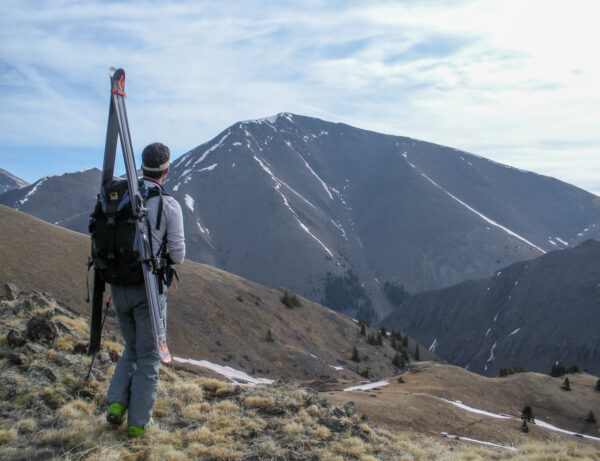
Experienced backcountry travelers accept that every outing doesn’t always go according to plan. A forced retreat will happen from time to time. It can be informative to look back on those days because they’re often full of learning moments.
If the decision to abort on a goal was based on safety concerns, you should take comfort in knowing that you heeded red flags and everyone is safe. It’s a sign of experience and mature, objective decision-making.
Did you take a chance on a mixed forecast or uncertain conditions that didn’t work out? I’m fond of the adage: “It’s hard knowing not going.” It’s always better to see for yourself, even if there’s a chance you might fail.
If you came up short due to miscalculating details of the day, or insufficient route planning, you have an opportunity to learn from those mistakes to plan better in the future.
And don’t discount the consolation prize you earn in the process — a second chance to be out with friends and partners and revisit a cool mountain zone on a better day. That’s always something to welcome.
When I reflect on 20 years of skiing 13ers and 14ers around the state, I can point to countless outings that went according to plan. And mixed in among them are a fair number of occasions where my partners and I didn’t succeed.
It’s those days where I feel I gained experience and wisdom. And they can offer just as many lessons and interesting stories as when everything goes according to plan.
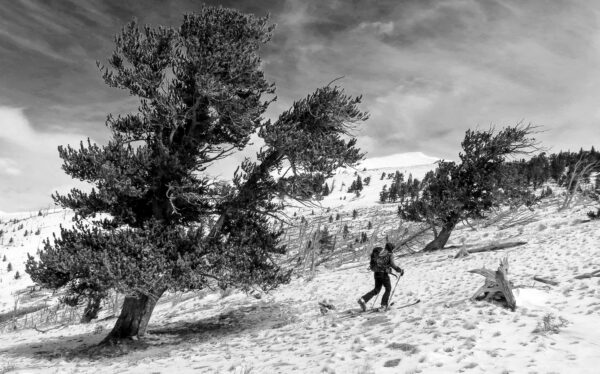
In 2013, on our quest to ski the Colorado Centennials, my wife, Christy, and I set out to climb and ski Mount Silverheels, an easy 13,000-foot peak north of Fairplay. We figured the gentle angles of the mountain would allow us to pull off a ski descent, despite a mixed weather forecast.
The stands of gnarled, slanted, centuries-old Bristlecones we skinned through should have served as a hint that we were underestimating this mountain.
We hadn’t even reached the tree line when driving winds repeatedly knocked us to the ground. It was impossible to communicate, even at a close distance, so we pulled the plug on the novice route. We learned to heed the wind forecast more carefully in that part of the state, and we returned later in the spring on a better day and got it done.
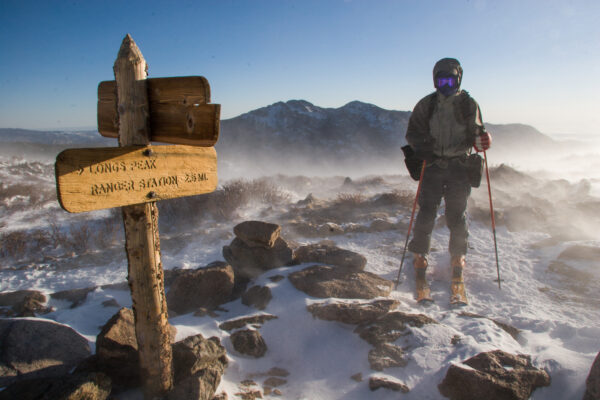
A similar situation unfolded in January 2006, where I joined Chris Davenport on Longs Peak, the final 14er of his “Ski the 14ers” project. We were excited to get it done and celebrate.
But the mountain had other ideas. As we broke out of the trees, skinning up the Longs Peak Trail, the infamous Rocky Mountain National Park winds picked up, and we were forced to abort.
We’ve twice bailed on ski attempts of Little Bear Peak, a steep 14er in the southern Sangre de Cristo Mountains. In both cases— though several years apart— warm temperatures and overcast skies prevented a good freeze, contributing to dangerous snow conditions. The sting of that decision was made worse by the six-hour drive required to reach that trailhead. But it was the right call in the interest of safety.
Capitol Peak required a couple of attempts before finally succeeding. In one instance, unconsolidated snow forced our group to turn around. That was an unfortunate outcome after our midnight start at the trailhead, and seven-hour approach to Pierre Lakes Basin.
The all-day, unsuccessful effort was tough to process, but it was the right decision. It taught us what to do differently on our next attempt, and we eventually returned in better snow conditions and pulled it off.
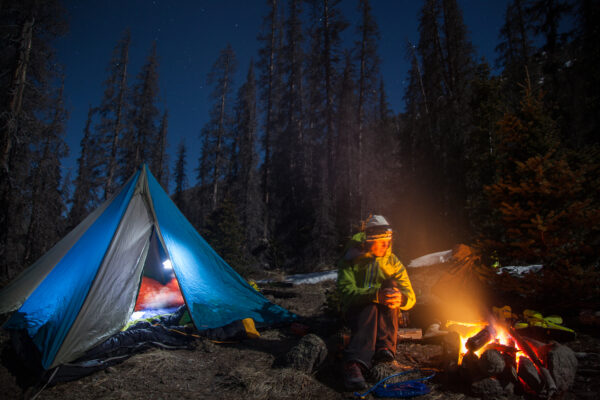
During our Centennial Ski Project, Christy, Chris Davenport, and I attempted to ski an easy 13er in the La Garita mountains near Creede. Our planned approach took us through an enormous forest that the Spruce beetle had decimated. Dead, fallen trees were piled on top of one another like 100-foot long pick-up sticks. Travel was so slow and inefficient we would have been out well into the night. So instead, we cut our losses and returned the following year to ski the mountain via a more suitable route.
In 2010, during Christy’s attempt to ski all of the 14ers, we headed to Telluride in hopes of skiing Wilson Peak and El Diente. It snowed on-and-off through the night as we camped in the back of the truck. We skinned up the valley under a brightening sky and noted small soft slabs cracking all around us, even on low angled slopes. We hadn’t reached the steep terrain, yet there was so much instability it was clear we couldn’t proceed safely.
We opted for coffee and croissants at Baked in Telluride, and we high-tailed it home to salvage the ski day up on Ajax that afternoon. The mountain could wait, and it did. We returned later that May and skied the two peaks after conditions stabilized.
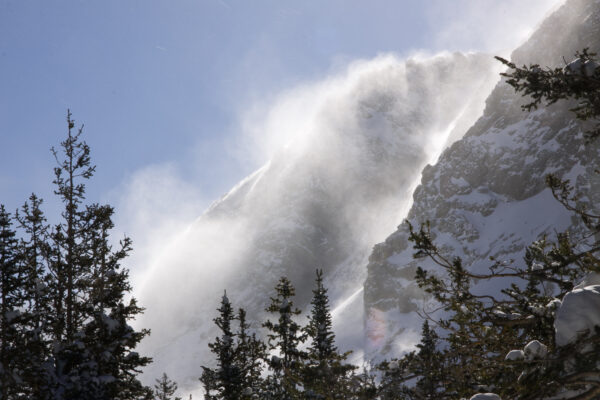
My partners and I turned back on Mount Princeton and San Luis Peak due to a lack of snow. We’ve also retreated on Kit Carson when there was too much snow. Winds forced us to abort on our first attempt on the remote Pigeon and Turret peaks. I’ve come up short on Mount Sopris on multiple occasions and for various reasons, and I’ve had several days cut short on Independence Pass when the overnight freeze was inadequate.
A year after turning back on Jagged, we returned to the mountain and got it done. What initially felt like defeat served as valuable recon and provided our group with a better understanding of what we needed to do to succeed.
These anecdotes are just a few examples that demonstrate how success in the mountains is never guaranteed. They taught me how to manage variables, and be a better planner and balanced decision-maker. And above all, these moments have taught me humility. Turning back isn’t a bad thing. It may ultimately contribute to your success.
Ted Mahon moved out to Aspen to ski for a season 25 years ago and has been stuck in the Rockies ever since. Contact him at [email protected] or on Instagram @tedmahon.

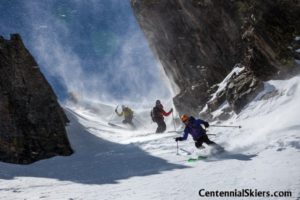
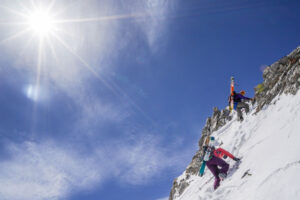
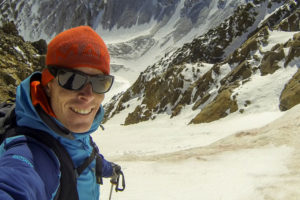
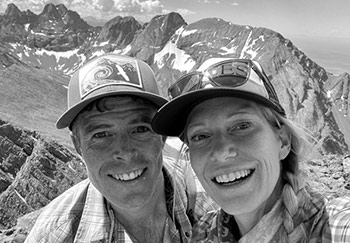






Leave a Reply